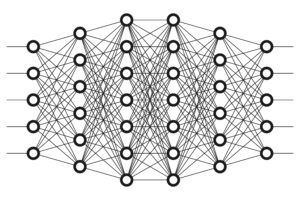
Hail Can’t Hide from Deep Learning, Researcher Finds

A deep learning approach can perform as well as a meteorologist in predicting dangerous hailstorms from radar images, a National Center for Atmospheric Research (NCAR) researcher said this week at Nvidia’s GPU Technology Conference in San Jose, California.
Machine learning techniques have traditionally had trouble predicting severe weather events with spatial patterns represented in images, NCAR postdoctoral researcher David John Gagne said Monday during his GTC session, “Deep Learning of Severe Weather Forecast Data.”
Principle component analyses (PCA), in particular, looks at the entirety of an image, which can lead their predictions astray. That led Gagne to wonder whether newer deep learning techniques, such as convolutional neural networks (CNNs), could generate better results.
Neural networks have a key advantage over older machine learning approaches — namely that the model decides for itself what features matter, instead of requiring a data scientist to select the features ahead of time. The question Gagne posed to himself was this: Can deep learning look at an image and see what a meteorologist sees?
Gagne developed his CNN in Python using the Keras and TensorFlow deep learning frameworks to have three layers. He ran the CNN on a small GPU cluster composed of eight Nvidia K40 GPUs. His training data set was composed of radar imagery from 27 days that contained 82,000 storms, while his testing data represented 10 days of imagery with 32,000 storms.
Instead of telling the machine learning model which features in the image matter, Gagne found the CNN could generate an accurate prediction by analyzing just a portion of an image. With multiple layers in the CNN and enough passes over the data, the deep learning approach was able to tease out the specific features that correspond with conditions that are conducive to severe weather events, specifically hail.
The CNN-based deep learning approach was superior to both PCA and generative adversarial network (GAN) approaches, Gagne said. This finding shows promise for the use of deep learning in improving the predictions severe weather — not just hail but also tornadoes, flash floods, and high winds.
Every year, severe weather causes billions of dollars in property damage and kills or injures hundreds of people. While tornadoes are more dangerous than hailstorms, they’re also much rarer. However, accurately predicting severe hailstorms — in particular those that generate hailstones bigger than 25 millimeters, which is the meteorological community’s threshold for “big hail” — requires meteorological manpower. If it can be automated with deep learning, then people can benefit through more thorough analysis of emerging hailstorms.
For Gagne, who for years studied the meteorological application of machine learning techniques at the University of Oklahoma, the advent of deep learning techniques marks a sea change in the meteorological community’s use of technology.
“Ten years ago they wouldn’t have given you the time of day,” Gagne said. “It’s amazing how fast it’s shifted.”
Related Items:
Nvidia To Use Virtual Reality for Autonomous Vehicle Testing
Nvidia Riding High as GPU Workloads and Capabilities Soar




























